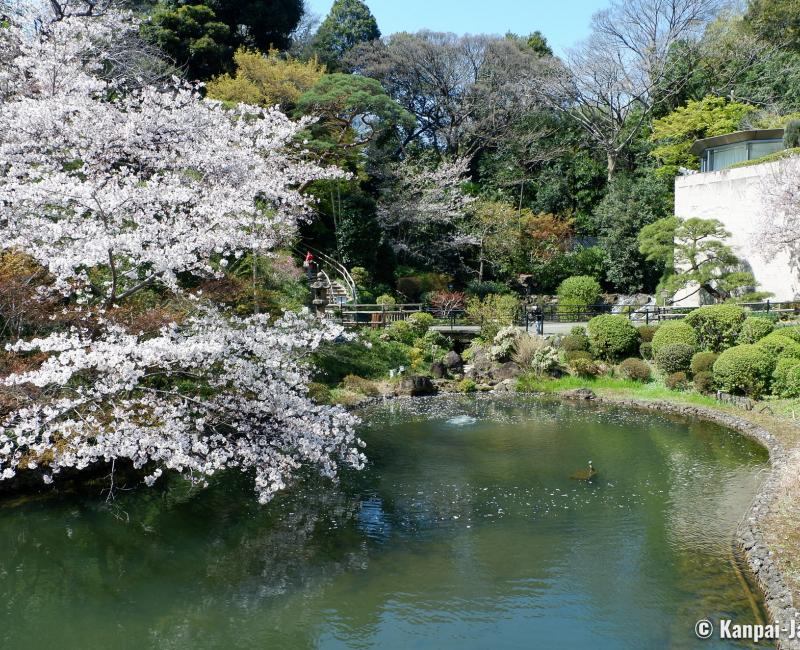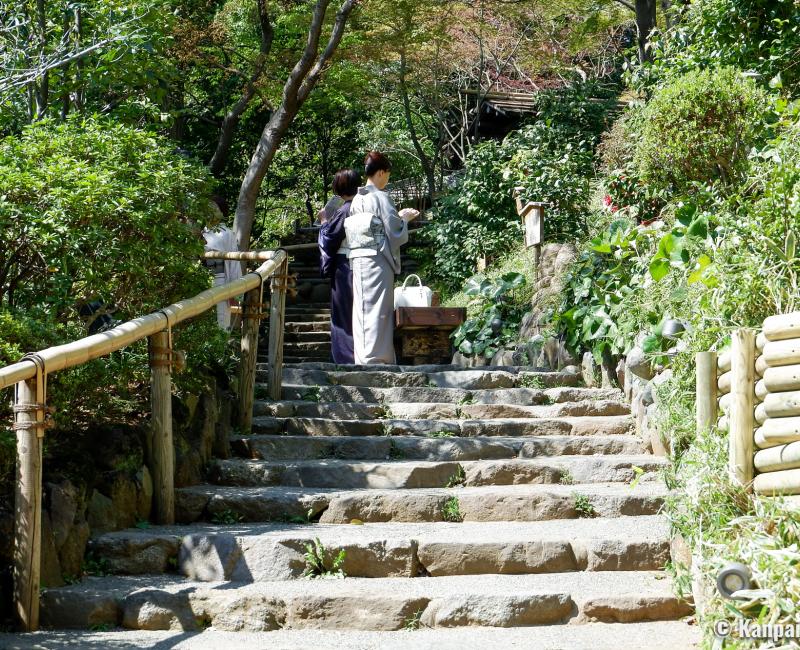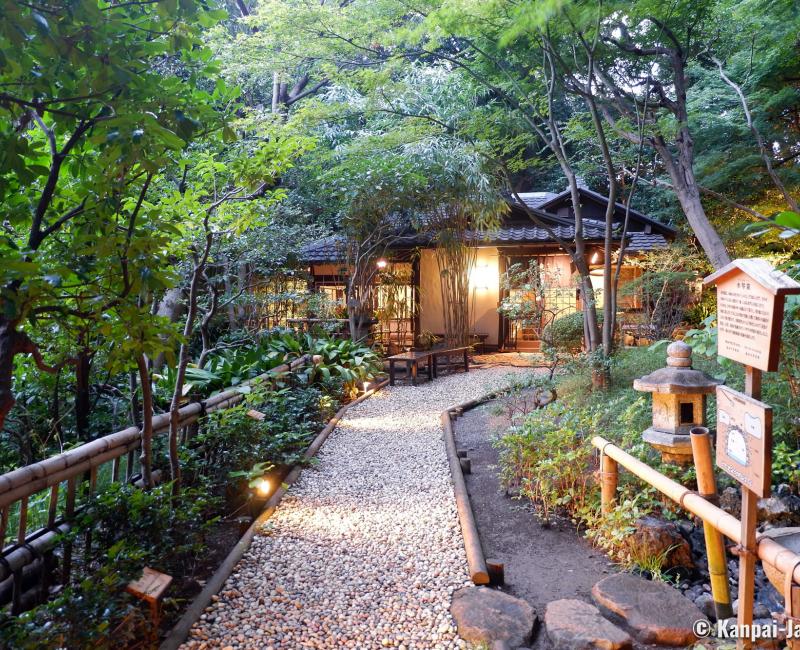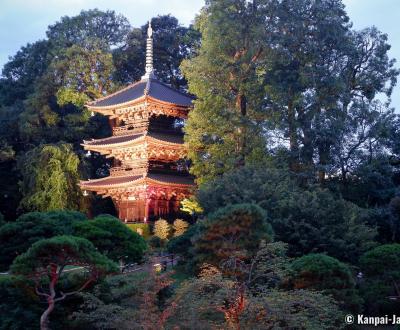Chinzan-so Teien
Aritomo Yamagata’s Opulent Great Garden
Chinzan-so Teien is the Japanese garden of the Chinzanso luxury hotel complex located on the side of the Kanda river, in the north-west of Tokyo’s center. Imagined in 1878 by Japanese statesman Aritomo Yamagata and opened to the hotel's guests, it spreads on a 6.6 hectare area where beautiful traditional landscapes and numerous historical buildings can be admired.
Chinzanso (椿山荘), the name of the garden, means "camellia mansion" and perfectly sums up the place: a wonderful realm of flowers. There are about 2,300 bushes of a hundred of different species which are particularly gathered on Tsubaki-yama, the camellia hill. The little mound is covered in flowers from January to March.
As it is often the case with Japanese gardens, a vegetal show is staged for every season in Chinzan-so. In addition to its thousands camellias that can be admired mainly in winter, the early spring is enlivened by the blooming of plum trees, followed by the cherry trees 🌸. In summer, the sound of the waterfalls gives a refreshing feeling in the little shaded paths enshrouded by a lush vegetation. Lastly the Japanese autumn brings flamboyant colors to the trees’ foliage.

The aristocratic origins of the garden
This wonderful haven of peace in the heart of Tokyo was created thanks to Aritomo Yamagata (1838 – 1922), a former samurai and military chief who became an important statesman of the Meiji Era (1868 – 1912). He bought the estate in 1878 to establish his private residence in the capital. As a great garden amateur, he was involved in Chinzan-so’s design, that we can still see nowadays. He also designed the gardens of Murin-an in Kyoto, whose visit is highly recommend during the koyo 🍁 season, and Koki-an in Odawara, which is more confidential as it is only open to the public on Sundays.
The luxurious estate was also a place of meetings and negotiations for dignitaries and politicians of Aritomo Yamagata’s time. Emperors Meiji and Taisho themselves took part in several of these meetings that contributed to shape modern Japan.
Later, it was baron Heitaro Fujita (1869 - 1940) who came to own Chinzan-so. A businessman from the Kansai area and copresident of the renowned Fujita-Gumi company, one of the biggest metal manufacturer in Japan, he continued his predecessor’s endeavor and produced a tremendous landscaping of the garden, with among other things, the addition of traditional and historical monuments.

A cultural and relaxing walk
The garden is now only opened to the hotel 🏨's guests. All along its paths are displayed beautiful heritage items of various dimensions, from various times and places of Japan. Each of these artifacts is named and introduced by signs written in Japanese and in English. For example:
- Thirty stone lanterns 🏮 including an authentic one of the Kamakura period (1192 – 1333) and coming from Hannya-ji temple (Nara);
- A Rakan statue dating back to the 16th century, placed near a small pond where flows a beautiful waterfall;
- A 3-story pagoda, the iconic building of the Chinzan-so, that is said to be 500 or 600 years old. Its particularity lies in its construction that does not use nails and it formerly belonged to the Chikurin-ji temple (Hiroshima);
- A chestnut tree, ranked goshinboku or "divine tree", which is the oldest of the garden and is identifiable thanks to its large 4,5 meters circumference trunk belted by a shimenawa rice straw cord;
- The small Shinto shrine Shiratama Inari, that was relocated in 1924 from Kyoto’s Shimogamo, and provides an occasion for a short recollection with the guardian foxes.
At the foot of the hotel’s glass building, the pond Yasuichi and a chapel named "Lumière" (Light) are used as ceremonial grounds for celebrating western-style weddings.

A restaurant in the heart of vegetation
The hotel compound is sheltering several restaurants and especially one nestled in the garden, in a small traditional house. However, the lovely Mucha-an, renowned for its soba buckwheat noodles, and its simple, delicious and affordable menu was replaced by an eel restaurant called UNAKIKU in March 2023.
For those who would like to continue explorating, we recommend the visit of the neighboring Shin-Edogawa Garden (Higo Hosokawa Teien), smaller but with a unique ambiance, and the Edogawa Park that borders the Kanda River and becomes at the beginning of spring an ideal place for an informal picnic under the blooming cherry trees.


